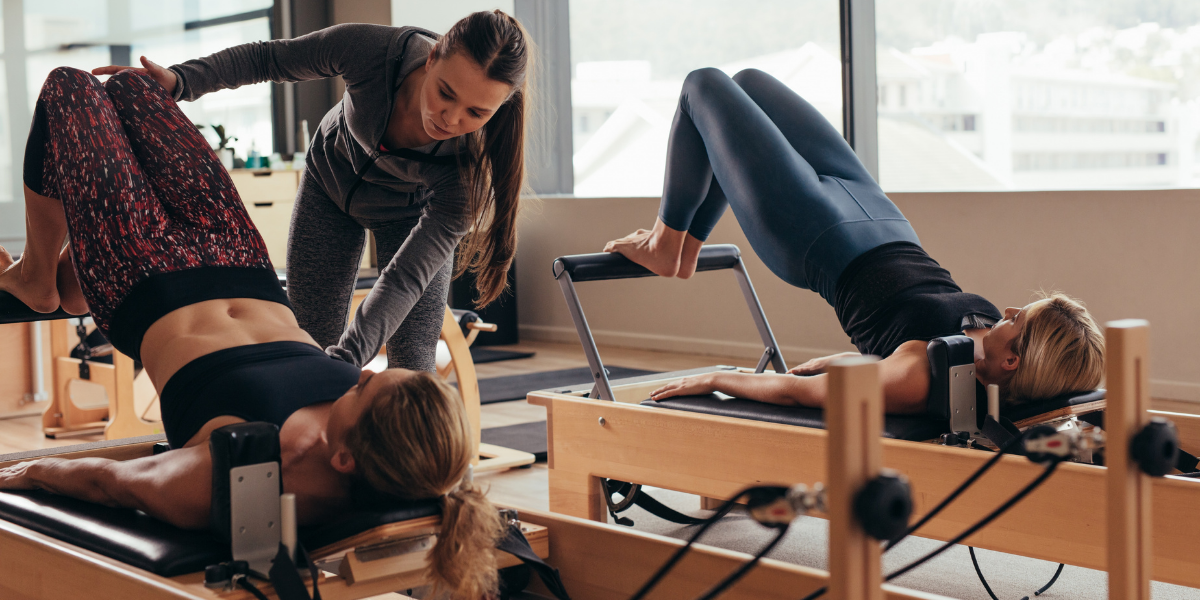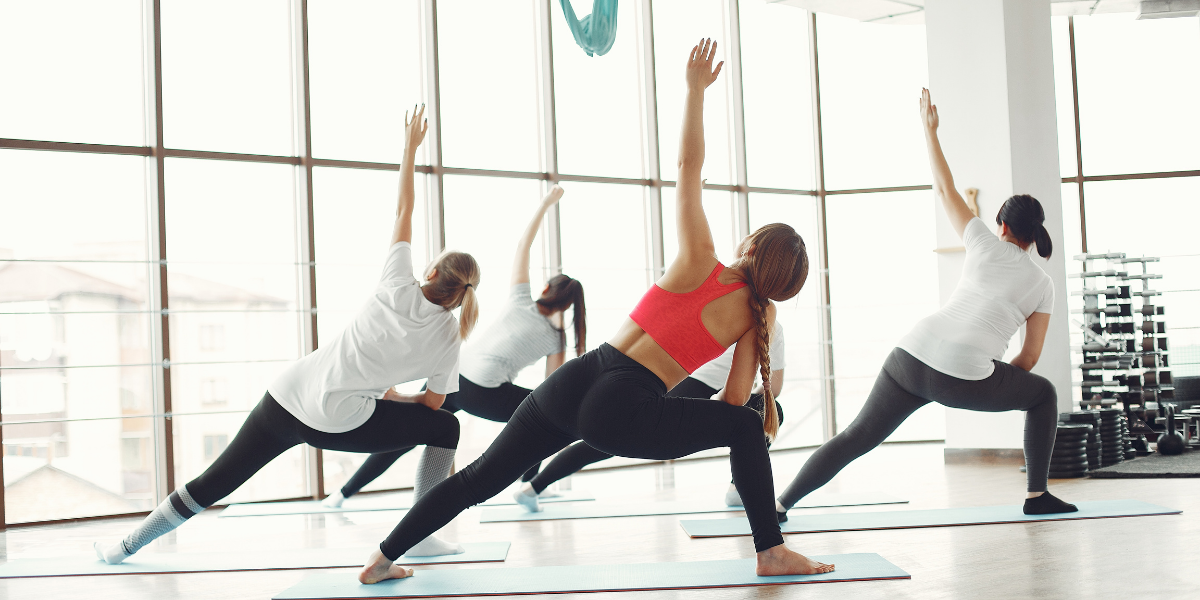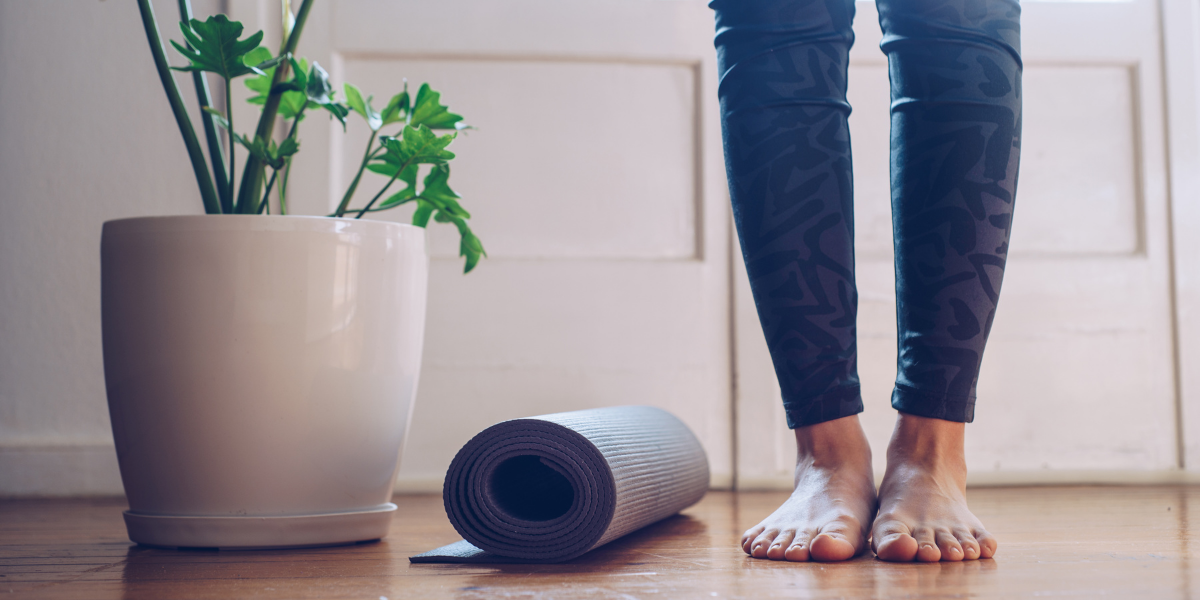
Both popular exercise regimes, yoga and pilates often are confused in the Western world. While both practices focus on flexibility and include many physical and mental benefits, yoga and pilates are widely different with one rooted in spirituality and the other a modern form of rehabilitation.
In this article, we’ll uncover the large similarities and differences between yoga and pilates and how you can get started on your wellness journey with these practices.

What is Yoga?
Yoga is an ancient Indian exercise technique that focuses on three essential aspects: physical poses, breathing and meditation. Although different people come up with different meanings for Yoga, the most accepted definition is: Yoga is a relaxation method or practice that connects your mind, body, and spirit.
Yoga focuses heavily on spirituality and dates back 5,000 years. The first recognized documentation of yoga came 2,000 years ago in the “Yoga Sutra,” a book of yoga philosophies written by Indian sage Patanjali. Today, yoga is widely recognized in Western culture as a modern-day exercise, however the benefits far outweigh the physical.

What is Pilates?
Pilates is a relatively new form of exercise compared to ancient Indian Yoga. Joseph Pilates designed this form of exercise in the early 20th century. The technique is based on 34 mat-based exercises.
However, you can modify these exercises as per your needs and requirements. Pilates is based on Contrology Theory that emphasizes controlling the body’s movement to strengthen muscles and improve mobility and flexibility. Pilates, like Yoga, also promote overall physical health and mental wellbeing.

The Key Differences Between Yoga & Pilates
Yoga is an ancient discipline that dates back 5,000 years. The technique was developed in ancient India. On the other hand, pilates is a specific system designed by Joseph Pilates, a German anatomist, in the earlier 20th century. The basic principle behind the development of pilates was physical rehabilitation.
Yoga focuses on deep breathing, proper relaxation, positive thinking, and mindfulness meditation. Deep breathing and mindfulness are key elements in yoga practices to strengthen the mind-body connection.
In contrast, pilates focuses on resistance movements that require the individual to use core and back muscles to achieve spinal stability. Pilates also focuses on certain exercises with controlled breathing that initiate the core muscles’ contraction. You can do pilates on a mat or use specialized equipment, including levers and springs or a reformer, to balance body weight.

Health Benefits of Yoga & Pilates
The benefits of yoga and pilates vary slightly, and are deeply rooted in the ideation behind each practice. For example, yoga is inherently more of a spiritual and mindfulness practice incorporating physical postures, while pilates is a more obvious fitness regime designed to improve core strength and body alignment.
Below, you will find a list of health benefits for both yoga and pilates.
Benefits of Yoga
– Mindfulness
– Improved balance
– Improved strength
– Improved posture
– Heart health
– Improved concentration and focus
– Back pain relief
– Stress management
Benefits of Pilates
– Build core strength
– Improves flexibility
– Improve tone and strength
– Balanced muscle strength
– Improved posture
– Rehabilitation of joints
– Increased circulation
– Body awareness
– Stress management

Getting Started
When you are ready to start your wellness journey with pilates or yoga, it is imperative that you first do your research, consult with your doctor and have all of the props and tools you will need for an at-home practice. We recommend a yoga mat for your practice. Look for one that is sturdy enough for you to balance on, but thick enough that you can kneel without hurting your knees. We love this one by Live Well 360! Not only is it handmade from 100% organic cotton which means it’s washable, but it’s also free of harsh chemicals and fair trade!
Once you have all of your tools, be sure to research the perfect online or physical studio. Ask friends and family if they do any of the practices, and research studios on your own too. Be sure to check that the instructors are certified to ensure that you do not injure yourself and are taking proper instructions. Lastly, stick with your practice! Do not be disheartened if you are not flexible at first – remember this is all progress and part of your wellness journey!
*Some products mentioned in this article are paid ads.


